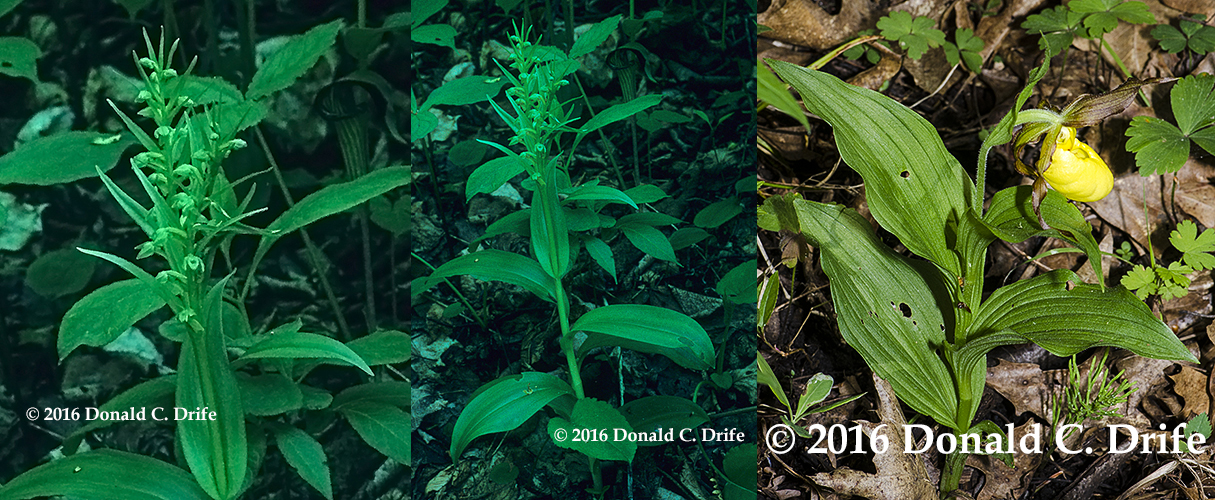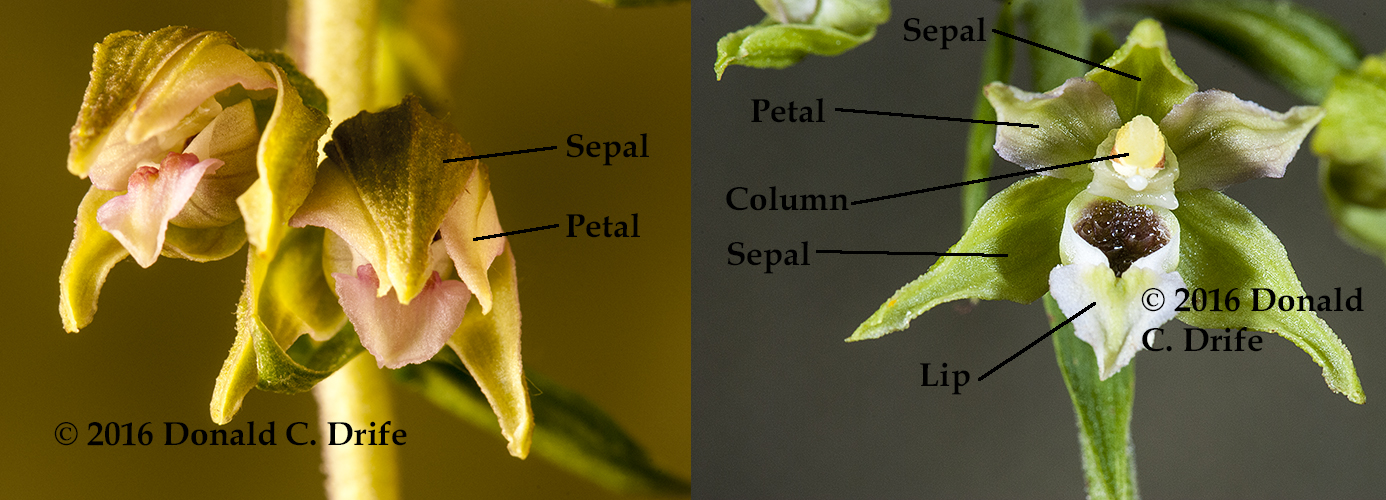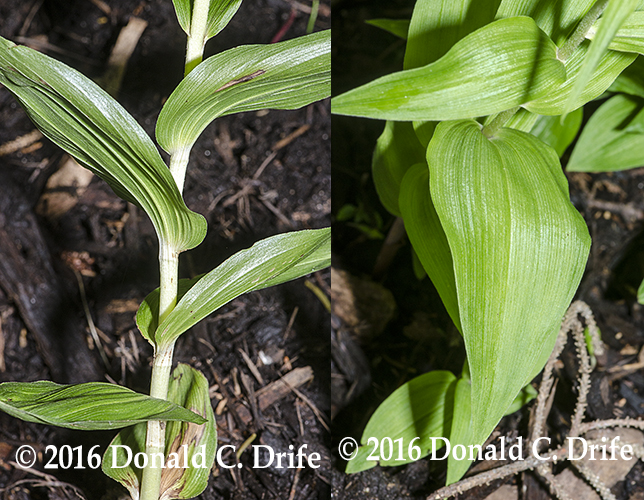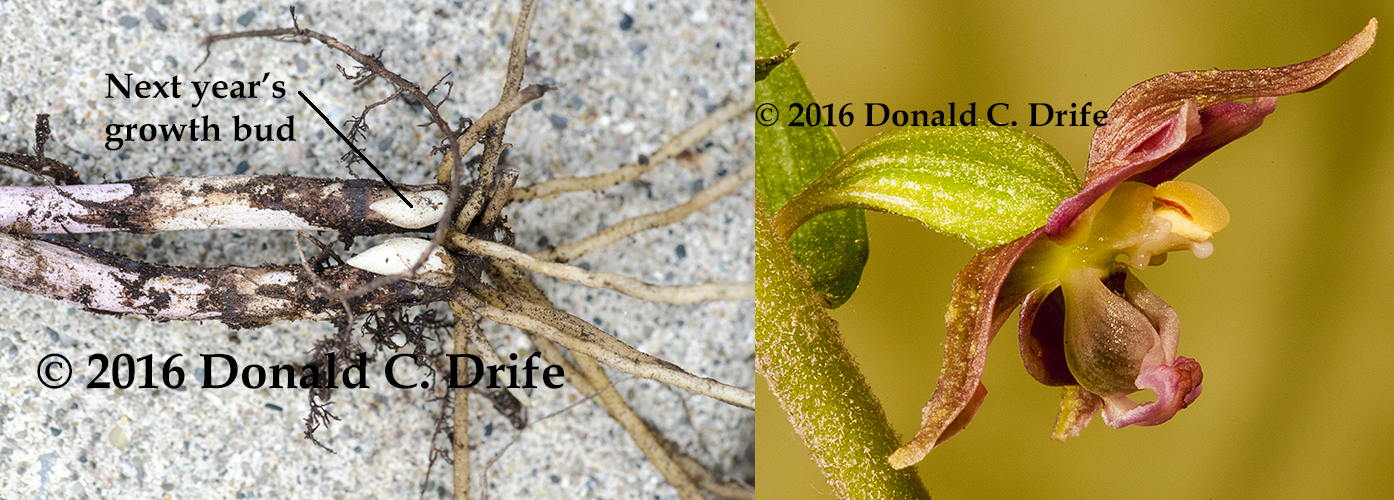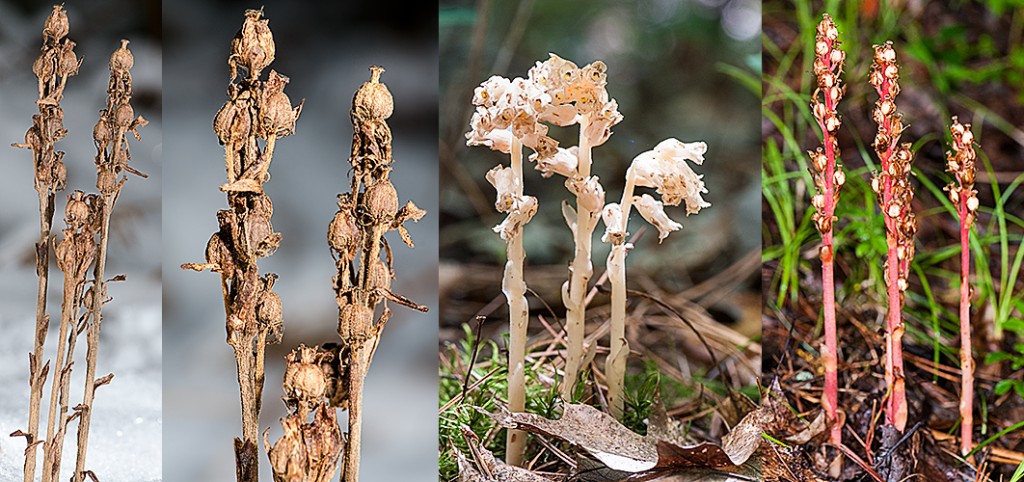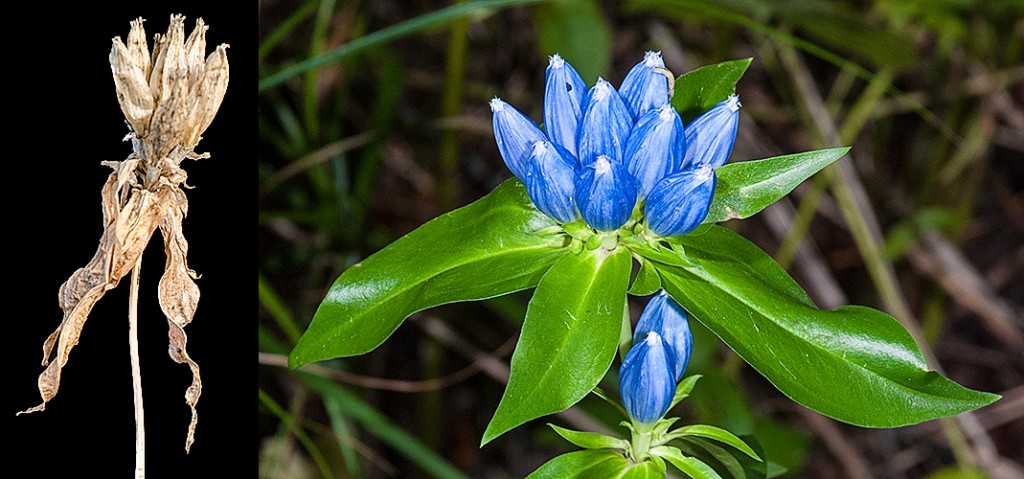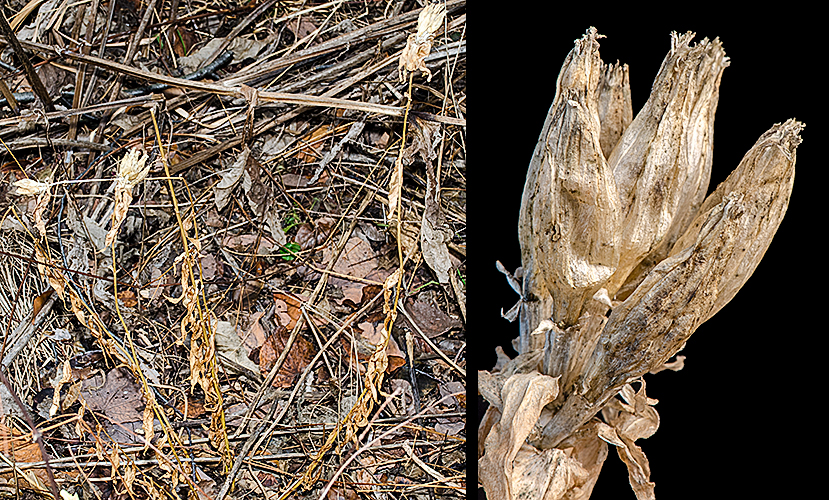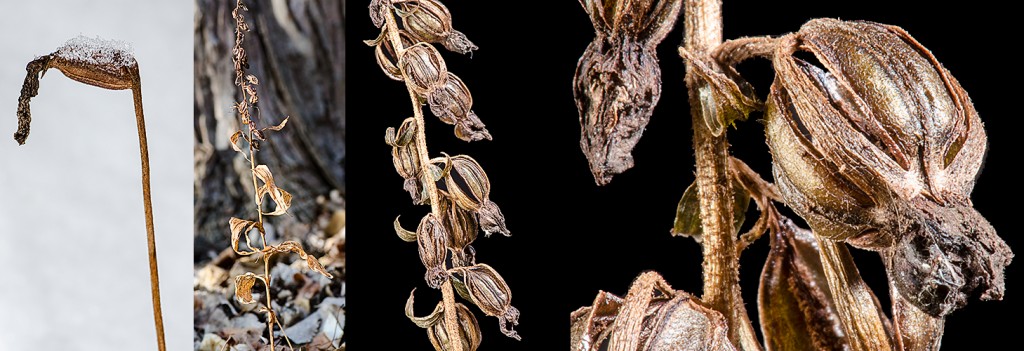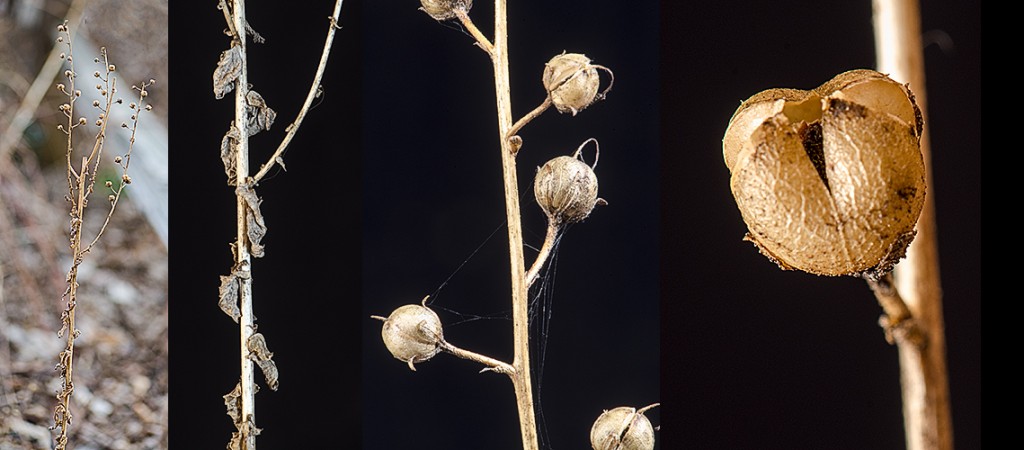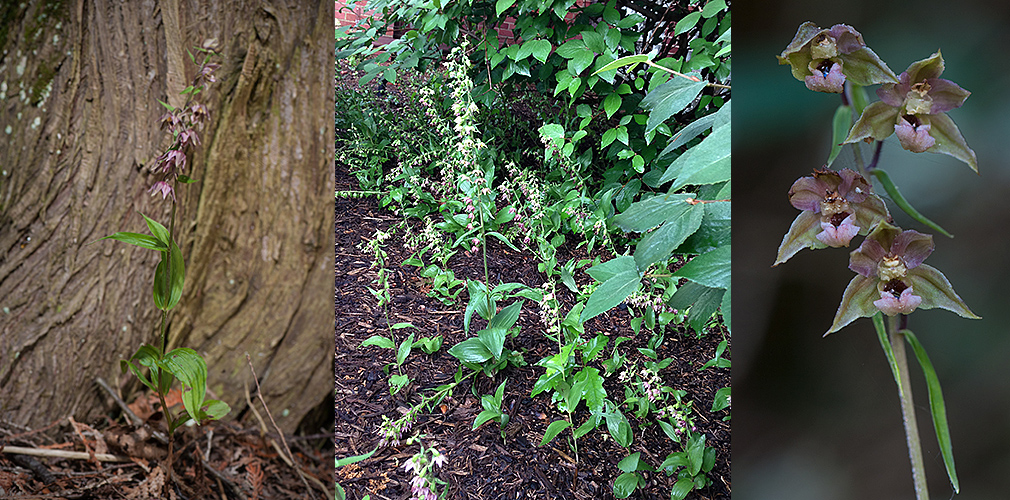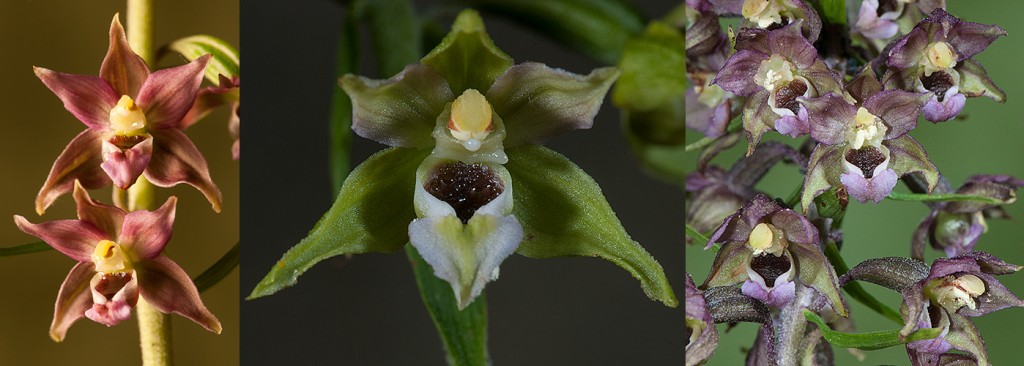Many people have posted comments on an earlier blog post about Broad-leaved Helleborine (Epipactis helleborine). There is a lot of confusion regarding the identification of this species. I recently saw a photograph of this orchid identified as Spotted Coral-root (Corallorhiza maculata). Broad-leaved Helleborine has several color forms and some of the field guides do not account for the variations.
If you have a plant in flower you can recognize it as an orchid because it has three sepals and three petals with one of the petals modified into a lip. The reproductive organs are fused into a column. The leaves are parallel veined. (Note: Sepals are the outer covering of a flower bud. Petals are inside of the bud.)
Broad-leaved Helleborine’s flowers are about 15mm (5/8 inches) across and the lip is turned in at the tip.
When not flowering Broad-leaved Helleborine is commonly mistaken for one of the lady-slippers but its leaves and stem are smooth. Lady-slippers (Cypripedium spp.) have hairy leaves and stems. Helleborine normally has more leaves than a lady-slipper.
Long-bracted Orchid (Coeloglossum viride) has smaller flowers with notched lips and is not as coarse a plant as hellebore. It grows in natural areas and I have never seen it invading a garden.
While this is not a gardening blog many people ask about controlling this species. The only way I know is to try to dig out the plant. If you leave any of the fleshy root behind it will come back. Note the growth bud for next year’s plant in the photo. Most orchid species have fleshy roots so please make sure you have the plant correctly identified before you dig. My earlier blog post showed this species growing with domestic Viburnum and, in spite of repeated digging, that colony is still growing. Plants appeared in my wildflower garden, but died out without any interference from me.
Broad-leaved Helleborine is probably growing in every county in the state. Learn the plant when it is flowering so you can identify it later in the year.
Copyright 2016 by Donald Drife
Webpage Michigan Nature Guy
Follow MichiganNatureGuy on Facebook

